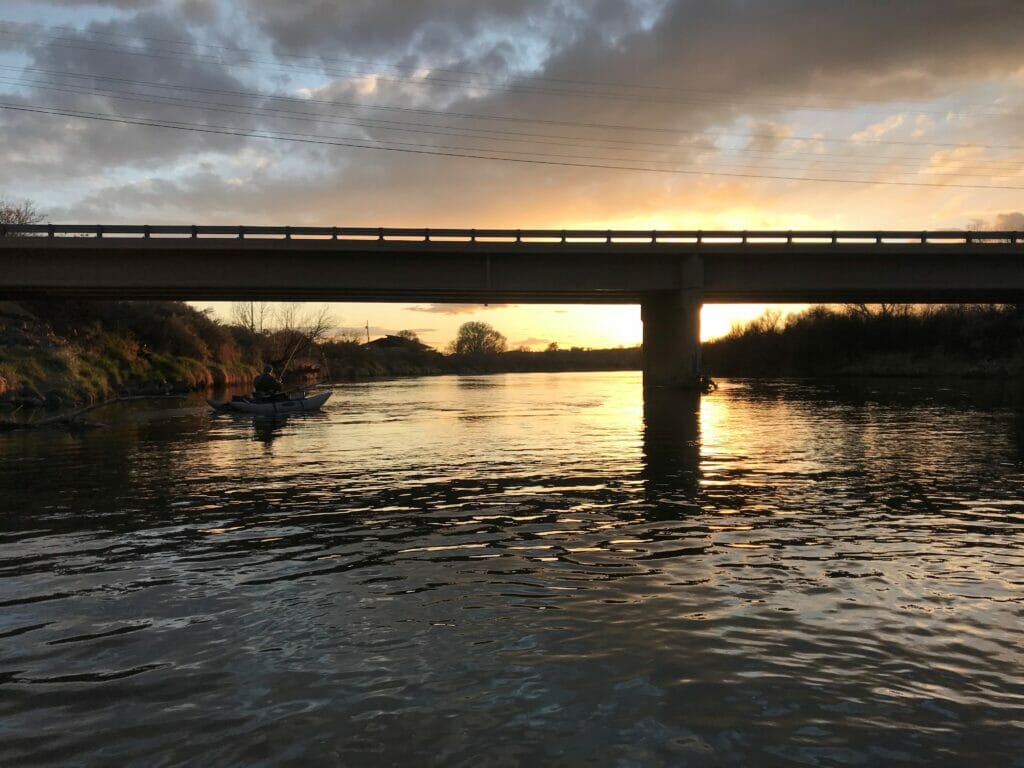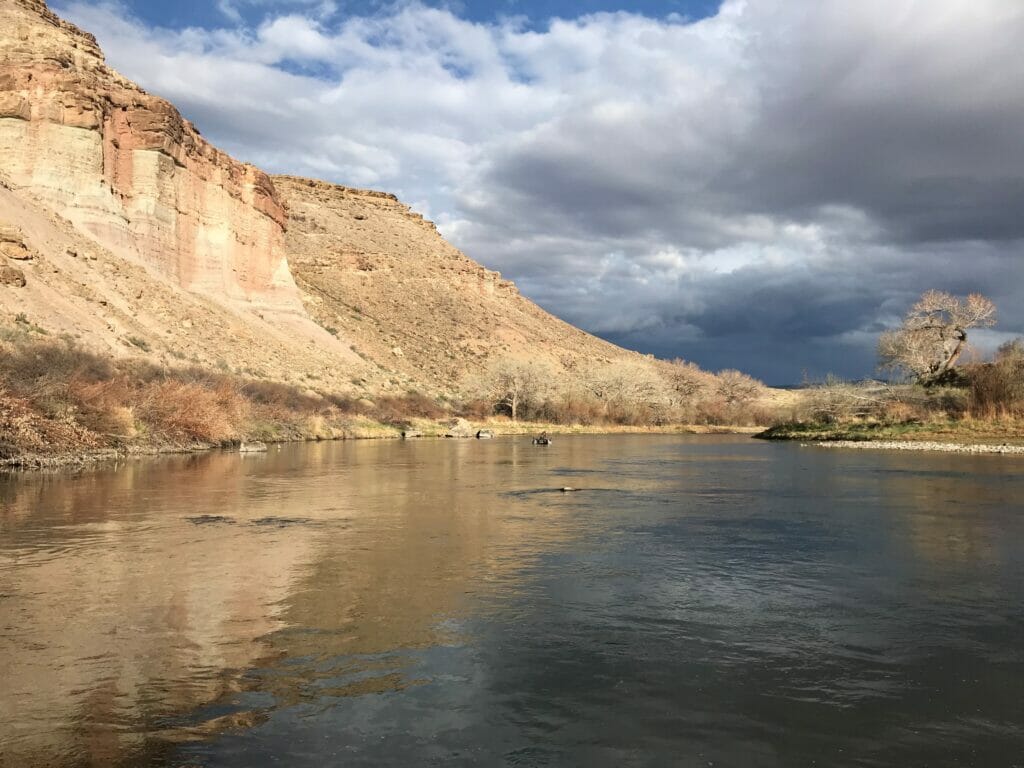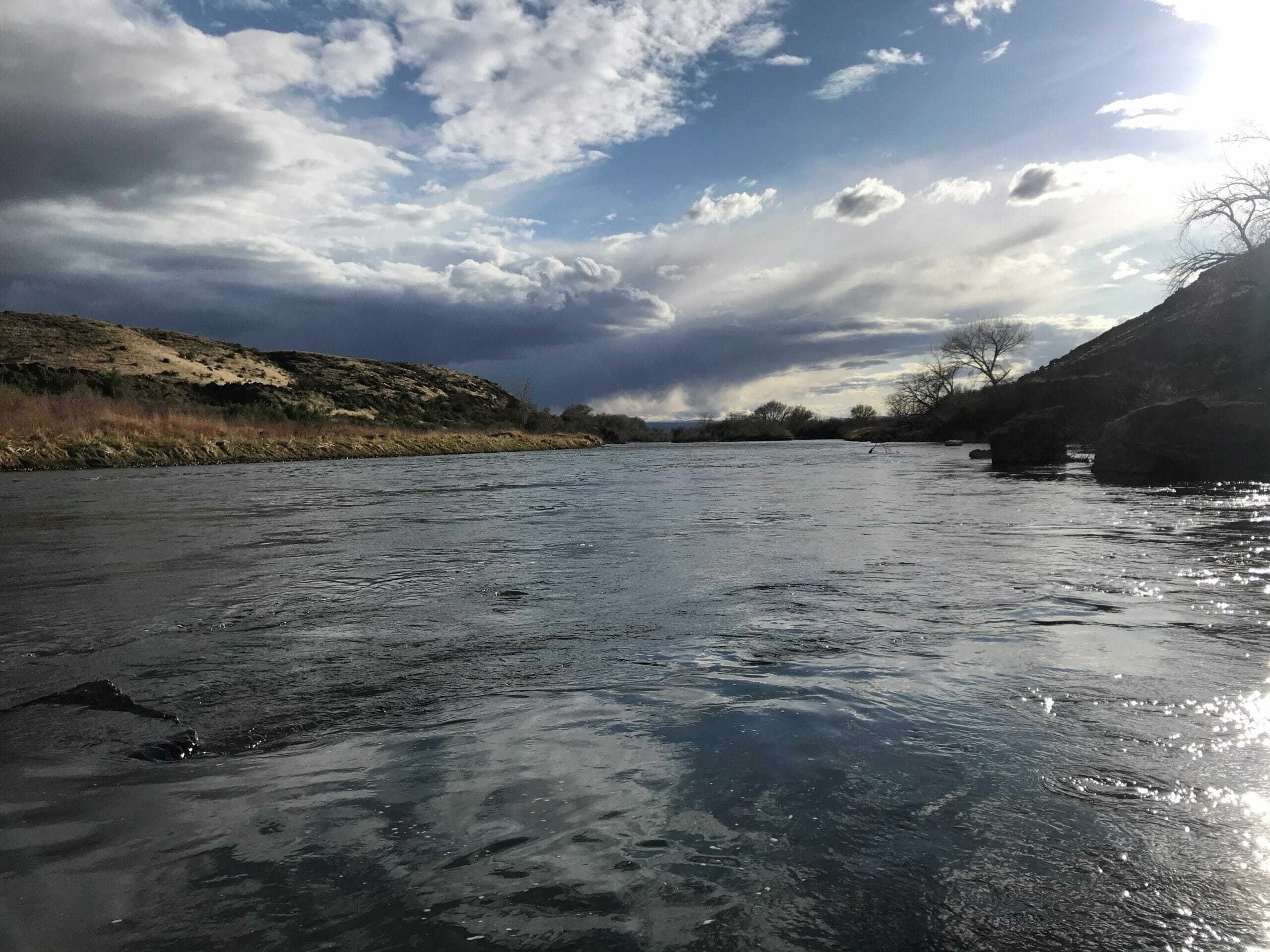By Cary Denison
As we welcome in the final act of this chain of Dumpster fires known as the year 2020, I thought I’d take a bit of time to reflect on what last year provided and what the future may hold. Aside from the obvious pandemic, wildfire, crippling drought, social and political unrest, I realized that I did not fish the Gunnison River enough. My fishing outings do seem trivial when I put it like this, but I find it noteworthy.
Aside from a family float where I spent most of the day pulling on the oars to prevent from being blown upstream, my only other float was in early part of 2020. On this day, my neighbor Ryan and I played hooky on a weekday to float the section of the Gunnison I refer to as the lower-lower, where gray buff-tinted slopes heaving over disorganized blocks of sandstone within the Gunnison Gorge National Conservation area give way to irrigated sections of river downstream from the town of Delta.
The fishing was less than remarkable on this day but I did see something that caused me to stand up in the raft and yell, “I have never… ever seen that,” as I pointed wildly to a barren section of riverbank below a makeshift parking lot adjacent to a corn field. It wasn’t a brown trout devouring a mouse or an eagle with a carp in its talons, both of which I’ve witnessed on this section of river in my 30-plus years of fishing it. It was a parking lot with five trucks with boat trailers attached––on a weekday, in February.

Just as that uncommonly warm late-winter day was a harbinger of the dry, hot summer to come, the parking lot full of boat trailers foretold the busy river season of 2020 on the Gunnison. Fishermen, recreational floaters, hikers and the like flocked to the river. Despite early season setbacks caused by COVID-19 restrictions, RIGS Fly Shop and Guide Service from Ridgway reported booming business from anglers looking to float the Gunnison in drift boats and rafts through the famous Gunnison Gorge. RIGS owner Tim Patterson, who employees 24 full-time employees and four part-time during the summer season, said interest in trips was “off the hook,” and total trips exceeded previous years. Bureau of Land Management staff report an estimated 172,000 river-related visits to the Gunnison Gorge NCA in 2020 and total visitation to the Black Canyon National Monument has doubled in the past five years.
TU’s friends at Business for Water Stewardship commissioned a study in 2020 that determined total economic contributions of water-related recreation activities were $461 million in 2019. Fishing alone was estimated to provide $60.6 million in spending in the Gunnison River basin.
The underpinning of this economic driver, of course, is constant flows of cold, clean water in our rivers and streams. The extremely hot and dry weather of 2020 took a serious toll on many streams and rivers in the Gunnison Basin –– headwaters streams ran dry and temperatures even in some of our bigger rivers exceeded levels that sustain trout. The drought conditions that impacted the area in 2020 are projected to continue in the coming year, and forecasters expect hot and dry summers to be the norm in the future.

As we gladly say goodbye to 2020, it is critical that we prepare for years like it by prioritizing conservation and wise water use. Ensuring our rivers and streams have sufficient water will not only help protect the fisheries they support and the local economy but will serve to provide our future generations of river lovers with fond memories.



